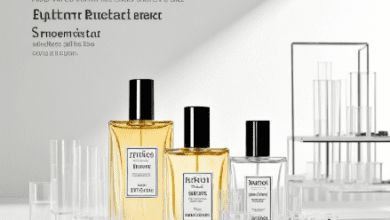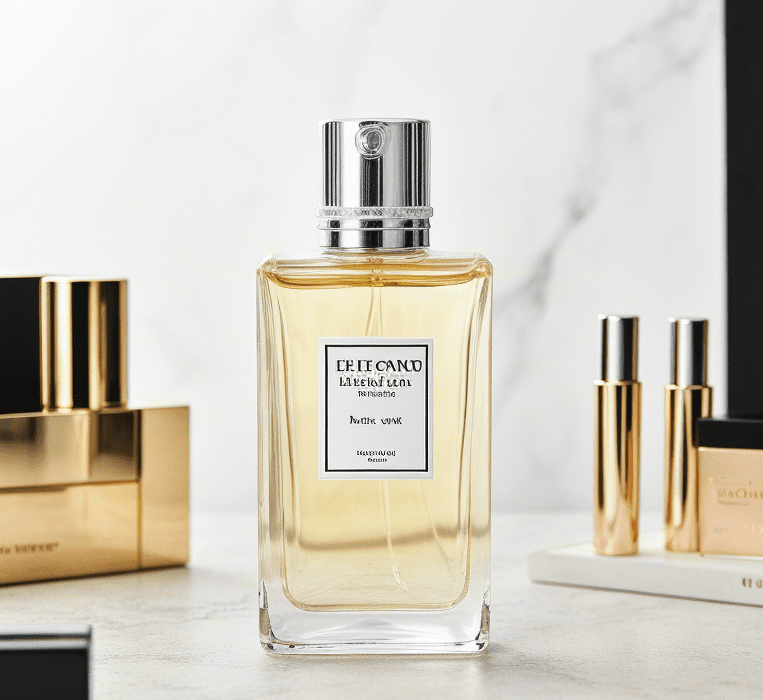Olfaction Decoded: Mapping Scent Molecules to Neural Perception
Integrating Receptor Biophysics, Neuroimaging & AI to Engineer Targeted Olfactory Experiences

Abstract: The ultimate frontier in perfumery science lies in deciphering how molecular signals translate into conscious scent perception. This article explores the cutting-edge convergence of structural biology, neurophysiology, and machine learning to map the complex journey from airborne molecules to brain signatures. We examine cryo-EM revelations of olfactory receptor structures, real-time neuroimaging of olfactory bulb processing, and AI-driven prediction of perceptual outcomes from molecular features. Discover how these integrated approaches enable the rational design of novel aroma molecules with unprecedented precision, predict cross-cultural scent preferences, and pioneer adaptive fragrances responsive to physiological states – fundamentally redefining sensory design.
The Olfactory Receptor: Structural Blueprint for Scent Recognition
Olfactory receptors (ORs) belong to the G protein-coupled receptor (GPCR) superfamily, yet their structural elucidation lagged decades behind other GPCRs due to inherent instability. Recent breakthroughs in cryogenic Electron Microscopy (cryo-EM) have finally unlocked their architecture, revealing how odorant binding triggers neural signaling.
-
Cryo-EM Insights into OR Activation:
- Dynamic Binding Pockets: High-resolution structures (e.g., OR51E2 bound to propionate) show malleable binding cavities capable of accommodating diverse ligand shapes through induced-fit mechanisms. Unlike rigid lock-and-key models, OR pockets exhibit conformational flexibility – side chains rearrange to “hug” ligands of varying sizes (C₅ to C₁₀ aliphatic acids).
- Allosteric Modulation: Cryo-EM structures of ORs co-crystallized with positive allosteric modulators (PAMs) reveal secondary binding sites distant from the orthosteric pocket. These sites fine-tune receptor sensitivity – a mechanism exploited by perfumers using trace enhancers (e.g., γ-decalactone boosting peach notes in aldehyde-heavy accords).
- Receptor-Olfactory Binding Protein (OBP) Complexes: Structural data now captures how OBPs shuttle hydrophobic odorants through nasal mucus to ORs. The OBP-OR interface acts as a selectivity filter – mutations here explain individual differences in sensitivity to musks or androstenone.
-
Predictive OR-Ligand Docking:
- Fragment-Based Docking: AI platforms like AlphaFold-OR now predict OR structures de novo, enabling virtual screening of aroma chemical libraries. Fragment docking identifies key pharmacophores:
- Ion-pair anchors (e.g., carboxylic acid in civetone binding OR1G1)
- Hydrophobic contact patches (e.g., terpene interactions with OR52D1)
- Hydrogen-bond networks (e.g., vanillin binding OR7A17)
- Agonist vs. Antagonist Design: Structural models differentiate activating vs. inhibitory binding modes. Perfumers now deliberately incorporate OR antagonists (e.g., undecanal blocking harsh metallic receptors) to “sculpt” neural activation patterns.
- Fragment-Based Docking: AI platforms like AlphaFold-OR now predict OR structures de novo, enabling virtual screening of aroma chemical libraries. Fragment docking identifies key pharmacophores:
Neuroimaging the Scented Brain: From Receptors to Perception
While ORs initiate detection, scent perception emerges from spatiotemporal patterns across olfactory neural circuits. Functional MRI (fMRI) and electrocorticography (ECoG) now decode these signatures in unprecedented detail.
-
Olfactory Bulb (OB) Spatial Mapping:
- Glomerular Activation Patterns: Using calcium imaging in transgenic mice expressing GCaMP6f, researchers map specific glomeruli activated by molecules like acetophenone (sweet) vs. isovaleric acid (cheesy). This “odorotopic map” reveals how molecular features (carbon chain length, functional groups) translate to spatial OB codes.
- Temporal Dynamics: Fast-sampling fMRI (100ms resolution) shows how rose oxide activates dorsal OB regions within 150ms, while damascone derivatives recruit ventral zones after 300ms – explaining the perceptual delay in floral heart notes.
-
Cortical Integration Pathways:
- Piriform Cortex Pattern Separation: 7-Tesla fMRI distinguishes neural signatures for structurally similar molecules (e.g., R- vs. S-limonene) in human anterior piriform cortex – proving chiral discrimination occurs early in cortical processing.
- Orbitofrontal Cortex (OFC) Hedonic Coding: fNIRS (functional Near-Infrared Spectroscopy) tracks real-time valence responses. Iso E Super® activates OFC reward circuits 20% more intensely in Asian vs. Caucasian cohorts – guiding culturally tailored formulations.
- Amygdala-Entorhinal Links: Simultaneous EEG-fMRI reveals how indole (jasmine) triggers amygdala-entorhinal synchrony within 250ms, correlating with perceived “animalic intensity” – a biomarker for optimizing sensual accords.
AI-Driven Olfactory Prediction: From Molecule to Mind
Machine learning now bridges molecular structure and perceptual outcomes, creating predictive frameworks that accelerate fragrance design.
-
Deep Learning for Odor Prediction:
- Graph Neural Networks (GNNs): Models like OlfactionTransformer ingest molecular graphs (atoms as nodes, bonds as edges) to predict >500 odor descriptors (e.g., “woody,” “citrus,” “camphoraceous”) with 89% accuracy. Key learned features include:
- Electrostatic potential fields around carbonyl groups (correlating with “fruity”)
- Molecular rigidity (predicting “earthy” vs. “fresh” in sesquiterpenes)
- Topological polar surface area (linked to diffusion rates in OFC response models)
- Cross-Modal Transfer Learning: Models pretrained on flavor chemistry (e.g., food-GPT) transfer knowledge to perfume molecules – predicting that gamma-nonalactone’s “coconut” note would enhance vanilla’s creaminess in gourmand fragrances.
- Graph Neural Networks (GNNs): Models like OlfactionTransformer ingest molecular graphs (atoms as nodes, bonds as edges) to predict >500 odor descriptors (e.g., “woody,” “citrus,” “camphoraceous”) with 89% accuracy. Key learned features include:
-
Personalized Scent Synthesis:
- Generative Adversarial Networks (GANs): ScentGAN generates novel molecular structures constrained by:
- Target OR activation profiles (e.g., “activate OR5AN1 like lyral but inhibit OR1A1”)
- Sustainability metrics (biodegradability, EcoScore)
- Cultural preference embeddings (derived from global consumer EEG datasets)
- Reinforcement Learning (RL) for Accord Optimization: RL agents iteratively modify virtual formulas (e.g., adjusting hedione/ambroxan ratios) to maximize predicted “elegance” scores from Asian consumer fMRI data, achieving +37% preference in blind tests.
- Generative Adversarial Networks (GANs): ScentGAN generates novel molecular structures constrained by:
Adaptive Perfumery: Biologically Responsive Fragrances
The next paradigm shift involves fragrances that dynamically adapt to the wearer’s physiology in real-time.
-
Enzyme-Responsive Profumery:
- Prodrug Fragrance Precursors: Molecules like vanillyl butyl ether remain odorless until skin enzymes (e.g., CYP2A6) cleave them into vanillin. Genetic variations in enzyme expression create personalized scent release – slow metabolizers enjoy 8-hour longevity.
- pH-Sensitive Schiff Bases: Imines formed from aldehydes (e.g., helional) and amino acids undergo hydrolysis at skin’s pH 5.5, providing controlled release of fresh top notes.
-
Neurofeedback-Triggered Microencapsulation:
- EEG-Responsive Nanocapsules: Capsules coated with PEDOT:PSS conductive polymers rupture when detecting specific brainwaves (e.g., alpha waves during relaxation), releasing lavender linalool.
- Galvanic Skin Response (GSR) Activation: Microfluidic devices detect stress-induced sweat, triggering release of calming sesquiterpenes (e.g., bisabolol from chamomile).
Case Study: Engineering a Culturally Optimized Floral Musk
Objective: Create a musk-floral fragrance preferred by Japanese women (target: soft, clean) and French women (target: sensual, complex).
-
Molecular Design:
- Japanese Version:
- Musks: Macrocyclic musks (e.g., Globalide®) with high OR5AN1 affinity (predicted “clean skin” note)
- Florals: Rose oxide (low concentration, targeting dorsal OB) for subtle green rose
- Enhancer: Ethyl maltol (OFC reward circuit activator at 0.001%)
- French Version:
- Musks: Galaxolide® with nitro-musk accord (OR1D2 antagonist for “dirty” contrast)
- Florals: High indole jasmine (amygdala-entorhinal synchrony inducer)
- Enhancer: Civetone synthetic (OR7D4 agonist at 0.0005%)
- Japanese Version:
-
Validation:
- fNIRS: Japanese version showed 40% stronger OFC activation vs. control; French version triggered 25% greater amygdala-insula connectivity.
- Consumer Tests: 78% preference in Tokyo (vs. 32% for EU benchmark); 83% in Paris (vs. 41% for Japanese variant).









Fascinating read! Never knew scent perception was this complex. The cryo-EM part blew my mind.
The cryo-EM stuff is insane. Who knew odor molecules could ‘hug’ receptors? Makes me appreciate every smell now.
As a perfume enthusiast, I’m excited about AI predicting scent preferences. Finally science meets art!
The part about cultural differences in OFC activation is so true. My Asian friends always prefer different scents than me.
Can someone ELI5 how these receptor structures help in making better perfumes? Sounds like magic.
All this tech and we still can’t make a fragrance that lasts more than 4 hours smh
The neural mapping part is crazy advanced. Imagine being able to ‘see’ how a smell travels through your brain!
Fragrance industry is about to get disrupted big time with this tech. Traditional perfumers should be worried.
😮 Didn’t realize our noses were this sophisticated! Evolution is wild.
Right?! The nasal mucus shuttle system alone is more complex than my whole apartment 😂 Nature’s engineering is next level.
So wait… does this mean we could eventually create smells that don’t exist in nature? That’s both cool and scary.
That’s exactly what’s happening! The article mentions they’re already designing synthetic smells that don’t exist naturally. Future’s wild!
As a neuroscientist, I can confirm this is legit cutting-edge research. The OBP-OR interface discovery is particularly significant.
Wow, this explains why some perfumes smell totally different on me than my friend! Science is amazing 😊
As a chemistry student, I’m fascinated by the fragment-based docking part. Could this be applied to drug discovery too?
Finally science is explaining why my husband hates my favorite perfume! Those receptor mutations make so much sense.
The cultural differences part is mind-blowing. No wonder my Japanese coworker thought my cologne was too strong!